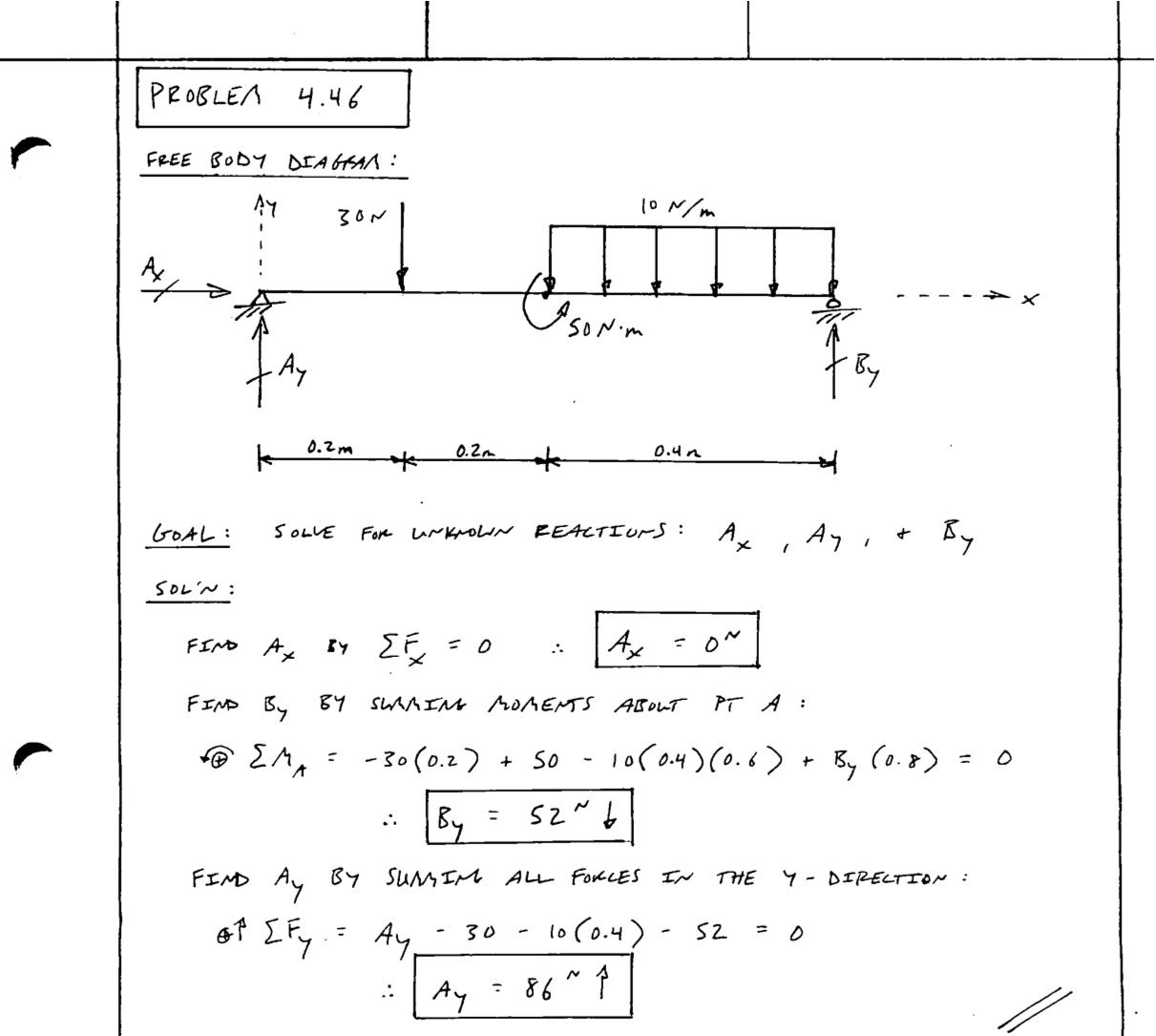The way you write up homework solutions should reinforce effective engineering problem solving strategies and to further develop technical communication skills. Let’s take a simple example and assume you are asked to find the reactions exerted on the members by the supports for the following structure:

Compare the following two solutions to the same problem:
Format A:

This solution is written on ruled notebook paper, the figure is sloppy (no dimensions, no units, no coordinate system), the results are unlabeled, and the solution isn’t at all annotated. This is poor technical communication in comparison to the following which excels at each of these points.
Format B:

Half of the problems I end up dealing with in office hours would be ameliorated by sticking to Format B. I don’t require this of my students just to unnecessarily burden them; it would blow your mind how useful a correct free body diagram is in structural engineering analysis. That’s sarcasm – how can you solve a problem you can’t draw an accurate picture of?
So, to receive homework credit in my classes, solutions must be organized and presented as follows (an example homework problem solution is shown below):
- Use green engineering graph paper, front side only
- Staple all pages
- Redraw a free body diagram of the structure using a ruler w/ all dimensions & units clearly labeled
- Identify solution goal and list all unknowns at the beginning of your solution
- Annotate all steps of your solution procedure linearly
- Box final answers and show units
Update (2018): Rereading this now, it strikes me as a bit pedantic. But I was trying to reinforce a manner of thinking more than a rigid style. I think the requirement helped a lot of my students.